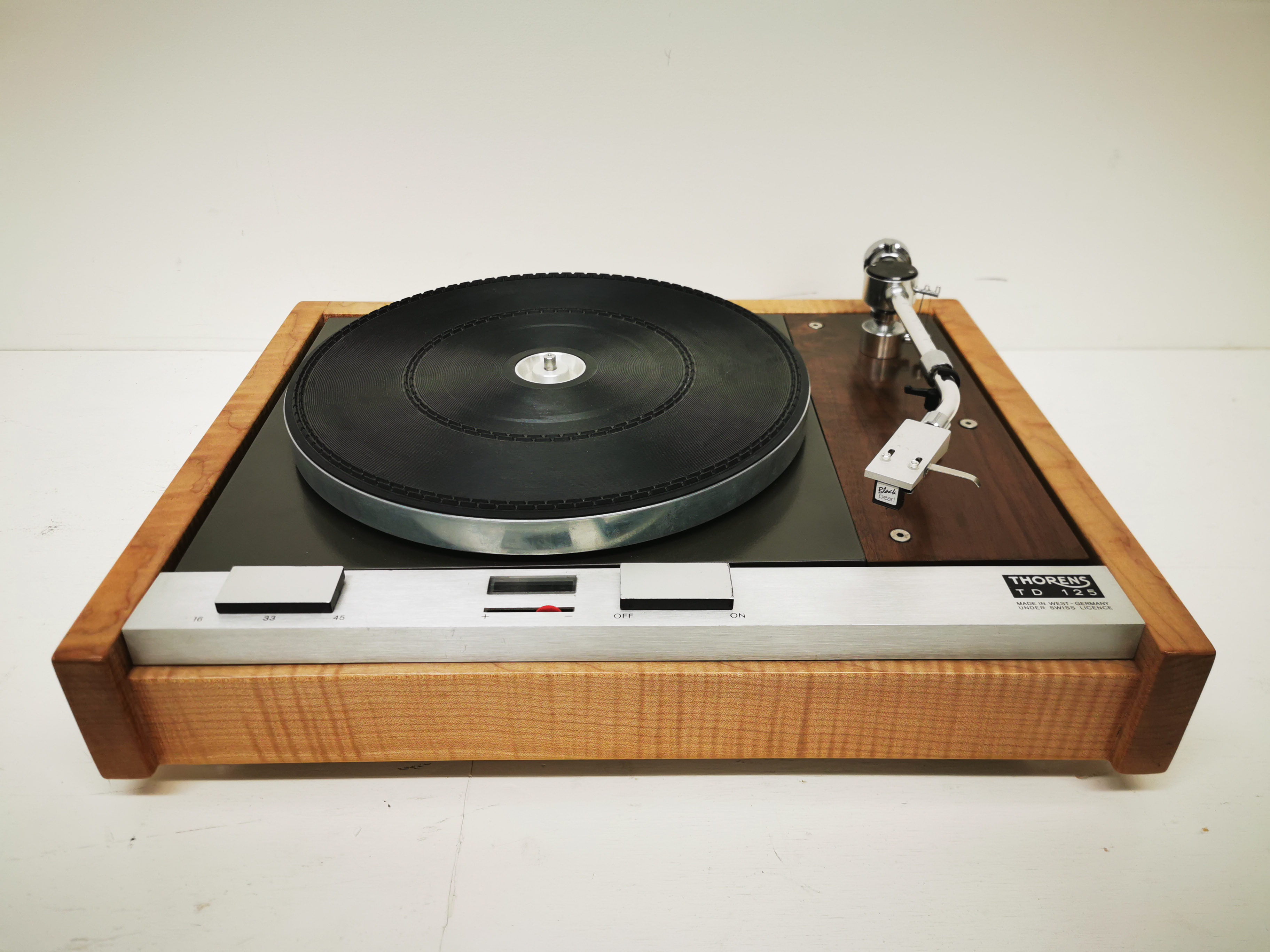In 1883, Herman Thorens founded the company in St Croix, Switzerland. It began as a maker of musical boxes and related equipment, then manufactured its first Edison type phonograph in 1903, before concentrating on horn gramophones for the new shellac records. The company made cigarette lighters until 1964, and only stopped selling harmonicas in 1952 – but by the beginning of the second half of the twentieth century, its major business had shifted to hi-fi. It was a powerful innovator, having created the Omnix, the first electronic phono pickup that used a magnet concept, in 1929.
Thorens began manufacturing professional disc cutting lathes and other pickup cartridges around 1940, and in 1957, the seminal TD124 was released. The top platter was decoupled from the lower platter by a slipper clutch, allowing records to start with the stylus already in the groove, and an illuminated stroboscope to match the variable speed control. The TD150 followed in 1965, and it crystallized the design into something that is instantly recognizable; indeed, you might argue that it is the basis for all belt-drive turntables. It was a belt-driven, suspended subchassis deck that was expertly screwed together, and many of them are still in use today.
The TD125 debuted in 1969, with a three-point suspended subchassis design, a massive AC synchronous motor and belt drive, strobe and varispeed – but all of this was now controlled electronically. It was quieter and more consistent than any of its competitors, including the Garrard 401, which used eddy current brakes. In 1972, the TD125 mark 2 was released, and it included the TP16 tonearm, as well as improvements to the oscillator control circuitry and a better main bearing. It was produced in various forms until 1983, when it was succeeded by the TD126 mark 3. Surprisingly, EMT produced a professional version of the ‘125, the 928. This model had a new control panel, a larger strobe, and a single-pivot tonearm.
In terms of sound, a well set-up TD125 can compete with greats like the Garrard 401 in terms of overall ability, though that doesn’t imply they sound alike. Where the British deck is more of a bruiser – in hi-fi terms, a monster truck with huge power and a dominating vision of the musical picture – the Thorens is a far more refined performance. No, not to be too picky, but it sounds noticeably better in the treble than the Garrard, which is pretty gritty and narrow. The midband on the TD125 is a little sweeter and silkier than the 401’s, lacking the 401’s more sharp ‘carved into space’ feel, making it a nicer, easier listen with more soul and jazz-based program material. The Thorens, on the other hand, falls behind in the bass; it’s not horrible, but it’s a touch softer around the edges and less propellant than the big Garrard. Both decks sound nice in general, but they sound really different.
These classics are ridiculously cheap these days, both in terms of sound quality and build quality. There’s really little that can go wrong, and when you pair it with a vintage SME tonearm, you’ll get a gorgeous throwback record player that’s both classy to look at and use at a fraction of the price of more current turntables. You can get a good one for around £500 or a fixer-upper for half that – which is fantastic value for money.






